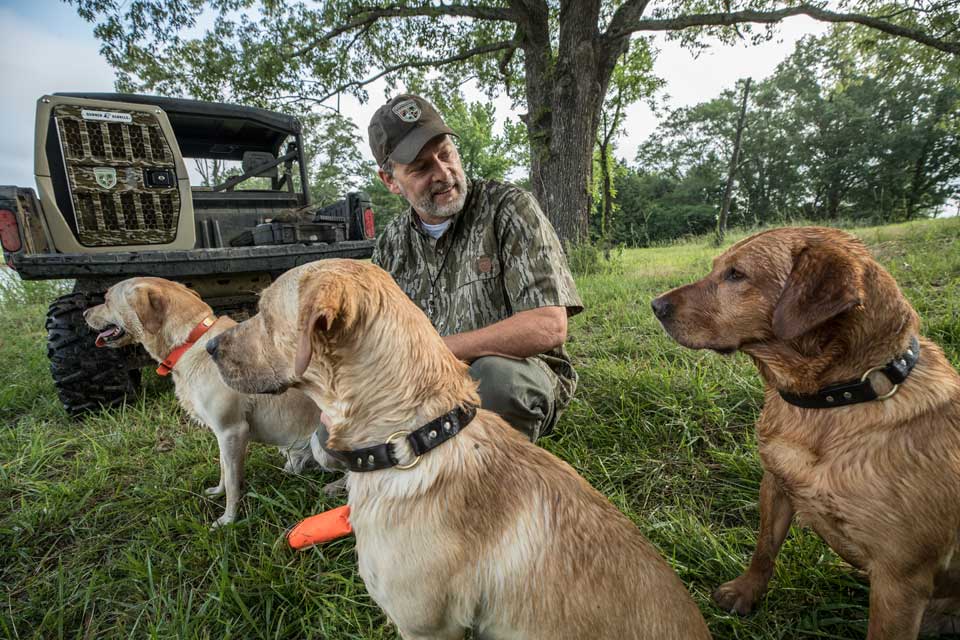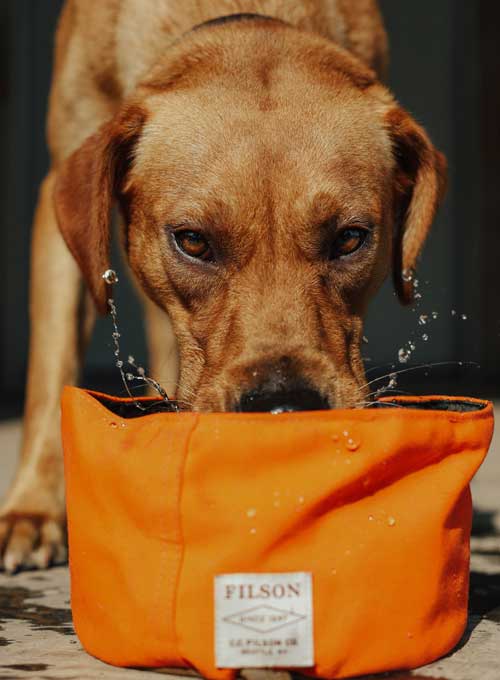Whether you want your dogs to be in peak shape for hunting season, or you’re trying out a medical diet to alleviate some canine health problems, there are many reasons you might want to make a dog food transition. So what should you do to make the switch as easy and painless as possible for both you and your dog? Follow these eight strategies to successfully transition your dog to a new diet.

Consider how major the switch is.
Some dog food transitions are relatively easy; for example, switching from chicken flavor to beef within the same brand like Mossy Oak's Nature's Menu. Others are more significant, such as changing brands of dog food, incorporating wet food, or eliminating certain ingredients due to allergies or sensitivities. The more significant the switch, the longer of a transition period you will need. Your dog is also more likely to react negatively to more drastic dog food transition, so if it’s a big swap, anticipate issues such as upset stomachs or refusing to eat.
Know why you’re making the transition.
There are many reasons you might need to transition dog food: your puppy is now old enough to eat adult dog food, your dog needs to lose or gain weight, your mama dog is pregnant or nursing and needs extra nutrients, your dog needs a performance diet for working, hunting or other activities, you’re adding a new canine to the family, your dog has a food sensitivity or allergy, or the veterinarian has recommended that you switch to a specific diet. Knowing the reason(s) will help you make the transition successfully and communicate to family members why you need to need to switch up Rover’s food.
Don’t disrupt feeding routines.
Dogs thrive on routine, so if you’re changing out their food, try not to disturb anything else about their eating patterns. Continue feeding them at the same time in the same location using the same bowl just like you always have. If you need to change the amount of food you’ve giving your dog in addition to switching out the brand (say, he or she needs to eat less to lose weight) taper off or ramp out the amount over a few days to make the transition more gradual. Creating a sense of routine and continuity for your dog will help them adjust faster to the new food.
 Plan ahead before you make the switch.
Plan ahead before you make the switch.
Don’t transition to a new dog food if your dog is already going through a lot of changes in other areas, such as moving or traveling. It’s best to transition food when your dog is feeling settled and content; if you try to switch dog food brands when they’re already anxious about traveling, it’s probably not going to go well. Make sure you’ve got some old food on hand (more on this in the next step) as well as the new food. If you share dog food duties with someone else—say you feed the dogs in the morning and your spouse does it at night—communicate with them to come up with a plan.
Space the transition out over time.
Some dogs have an iron stomach and will eat anything in sight, so you can theoretically make the transition cold turkey. But most dogs won’t take well to a sudden switch, so it’s usually best to spread the transition out over five to seven days, using the following food ratios.
- Days 1-2: 75 percent old food, 25 percent new food
- Days 3-4: 50 percent old food, 50 percent new food
- Days 5-6: 25 percent old food, 75 percent new food
- Day 7: 100 percent new food
If all goes well, by the end of the week, your dog should be happily eating the new food exclusively, with no need to mix it with anything.
Make the food seem appealing.
Thankfully, dogs are easier to transition to new food than cats, so they will likely chow down on the new food with glee after a couple days. However, if they’re still being picky, you can make the food seem more desirable by hand-feeding them a few pieces as a “treat” to get them used to the taste. While it may seem like a good idea, try to avoid doctoring the new dog food with treats or human food to make your dog eat it. If you do that and your dog does have a negative reaction, you don’t know if it was caused by the new food or the old gravy you put on it.
Don’t worry too much about partially eaten or missed meals.
Some dogs may pick around the new food and only eat the old food (or vice versa) when the dog food transition first begins. They may also eat only part of the food, or refuse it altogether for a couple meals. Partially eating or missing one or two meals shouldn’t hurt your dog too much, so don’t worry if they skip a couple and start eating after that. However, if they pick at or miss more than two meals, that’s a sign that something is wrong, so contact your veterinarian if that’s the case.
Watch for symptoms of adverse reactions.
Refusing to eat is just one sign of a negative reaction to a new dog food. Your dog may scarf down the whole bowl, only to barf it all up a few hours later, or develop diarrhea after eating. Other digestive signs to watch out for include abnormal gas, weight loss or poor weight gain, abdominal pain and discomfort, and itching or scratching way more than normal. Also look for changes in stool consistency and/or volume that aren’t serious enough to qualify as diarrhea. If you notice these signs, stop feedings your dogs the new food and contact your vet.
These eight steps will make the dog food transition as stress-free as possible for you and your dog. Before you know it, they’ll be wolfing down the new kibble without a second’s hesitation.






























